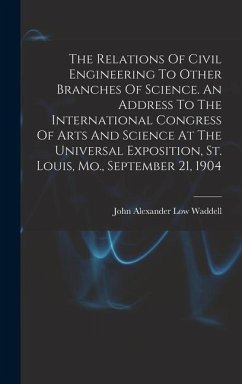
Street Lighting In St. Louis
Versandkostenfrei!
Versandfertig in über 4 Wochen
25,99 €
inkl. MwSt.

PAYBACK Punkte
13 °P sammeln!
Explore the historical development of street lighting in St. Louis with this detailed study by the Civic League of Saint Louis. This report delves into the technical and social aspects of lighting the city's streets, offering insights into the engineering practices and urban planning considerations of the time. A valuable resource for historians, urban planners, and anyone interested in the evolution of municipal infrastructure, 'Street Lighting In St. Louis' provides a unique perspective on the challenges and innovations involved in illuminating a growing American city. Discover the historica...
Explore the historical development of street lighting in St. Louis with this detailed study by the Civic League of Saint Louis. This report delves into the technical and social aspects of lighting the city's streets, offering insights into the engineering practices and urban planning considerations of the time. A valuable resource for historians, urban planners, and anyone interested in the evolution of municipal infrastructure, 'Street Lighting In St. Louis' provides a unique perspective on the challenges and innovations involved in illuminating a growing American city. Discover the historical context and the forward-thinking approaches of the Civic League as they addressed the needs of the community. This work has been selected by scholars as being culturally important, and is part of the knowledge base of civilization as we know it. This work was reproduced from the original artifact, and remains as true to the original work as possible. Therefore, you will see the original copyright references, library stamps (as most of these works have been housed in our most important libraries around the world), and other notations in the work. This work is in the public domain in the United States of America, and possibly other nations. Within the United States, you may freely copy and distribute this work, as no entity (individual or corporate) has a copyright on the body of the work. As a reproduction of a historical artifact, this work may contain missing or blurred pages, poor pictures, errant marks, etc. Scholars believe, and we concur, that this work is important enough to be preserved, reproduced, and made generally available to the public. We appreciate your support of the preservation process, and thank you for being an important part of keeping this knowledge alive and relevant.












